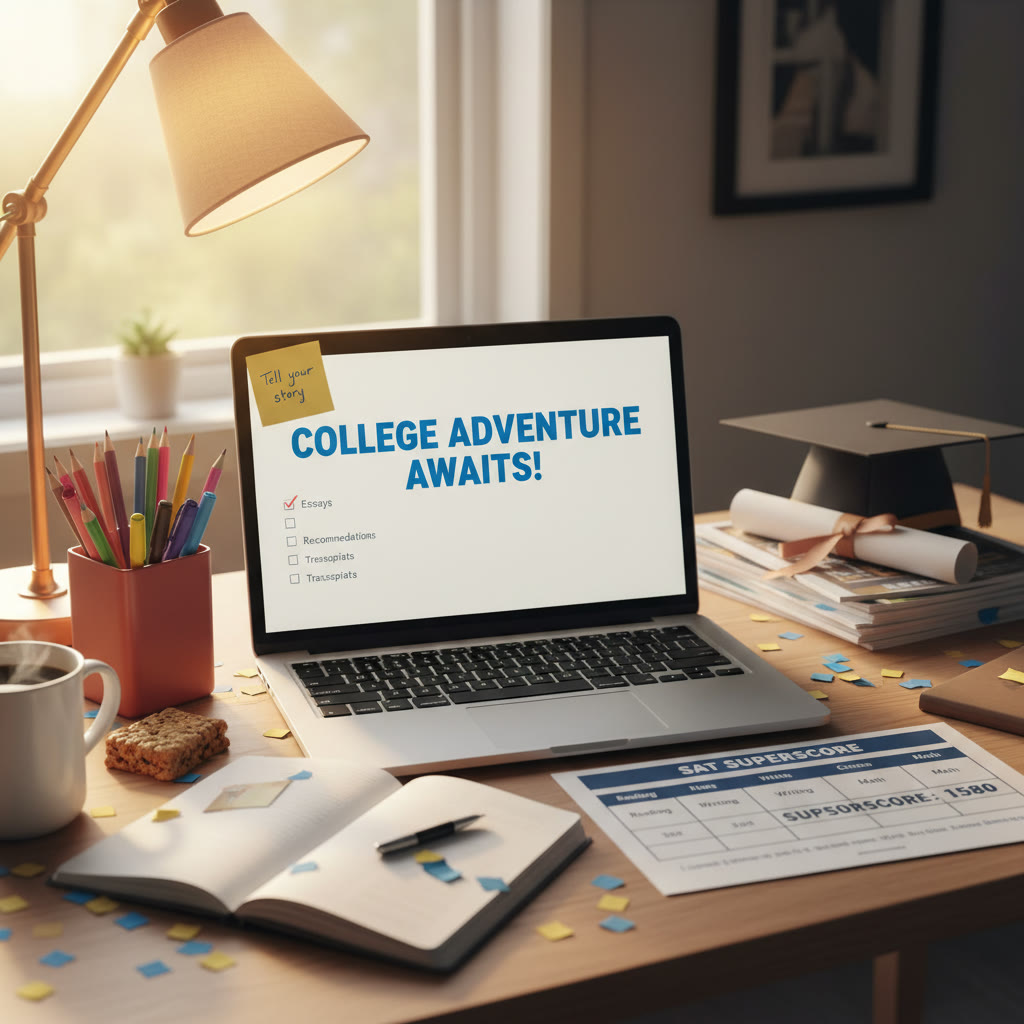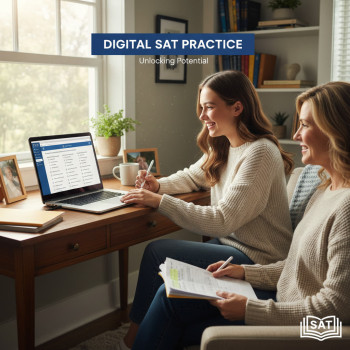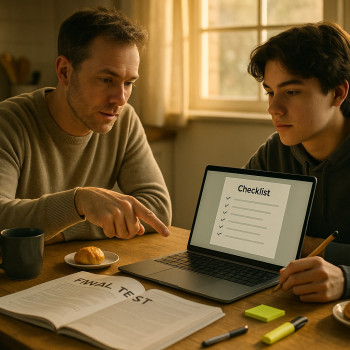Why Superscoring Matters: A Simple Start
There’s a lot of mystique around Ivy League admissions—blurred lines between what’s required and what’s optional, and a steady stream of new strategies students try to outsmart the system. One practical tactic that deserves calm, clear attention is superscoring. In plain language: superscoring means a college looks at the highest section scores across multiple SAT test dates and combines them into a new “best” composite score. For students who show different strengths on different days, superscoring can be a meaningful advantage.

Who uses superscores, and why it helps
Not every college superscores, and policies can change over time, but many selective universities accept superscored SAT results because it gives a fuller picture of an applicant’s peak abilities. For Ivy League hopefuls, even incremental score improvements can shift percentile placement and make a school more confident in considering an applicant’s academic readiness—especially in departments where quantitative or verbal strength matters.
How Superscoring Works (Step-by-Step)
Understanding the mechanics helps you plan intentionally instead of guessing. Here’s the breakdown:
- Take multiple official SATs: Each test date yields a section score for Evidence-Based Reading & Writing (EBRW) and Math. On the Digital SAT, section-level reporting still allows schools to examine strongest performance by section.
- College collects all scores: Many colleges ask you to send all your SAT test dates, or they can request score reports. Some encourage all-scores submission to support fair superscoring.
- Admissions teams combine the best section scores: The highest EBRW from any test date and the highest Math from any test date are combined to form the superscore.
- Schools evaluate the superscore alongside your transcript, essays, recommendations, and extracurriculars: A higher superscore can reinforce academic fit but is only one part of a holistic review.
Practical example
Imagine two test dates. On Test A you score 730 Math and 650 EBRW. On Test B you score 700 Math and 720 EBRW. A superscore approach yields Math 730 + EBRW 720 = combined 1450—higher than either single-date composite. That combined score might improve your match with a target Ivy school’s median SAT range.
Superscoring and the Ivy League: What You Need to Know
When we talk about the Ivy League, we’re usually referring to a set of highly selective, research-focused universities with rigorous admissions processes. These schools typically evaluate applicants holistically, meaning your SAT (superscored or otherwise) is considered alongside many other factors. Still, a higher SAT superscore can reduce perceived risk and strengthen the academic piece of your application.
Key realities
- Many top colleges do accept superscores or explicitly state they consider section-best scores when presented; policies may vary and evolve.
- Some Ivies have periods of test-optional policies or different emphases during recent admissions cycles—this means whether you send scores at all becomes a strategic decision.
- Even when schools are test-optional, submitting a strong superscore can be an asset—especially if it aligns with your academic record and intended major.
How to Use Superscoring Strategically
Superscoring isn’t a magic trick—it’s a tool. Use it alongside smart preparation, test-day management, and timing. Here are practical steps to turn the idea into results.
1. Plan test dates with progress in mind
Start early. Plan two or three official SAT dates across junior and senior year, with specific windows for focused study and target score goals after each test. If you want to maximize superscoring potential, ensure your preparation targets your weaker section so that you can improve on a later test date.
2. Treat each section as its own project
Because superscoring isolates EBRW and Math performance, treat them as two parallel goals. Schedule focused practice blocks: vocabulary and analysis drills for EBRW and targeted problem sets for Math. This split strategy helps you push each section upward on different dates.
3. Use official practice and realistic full-length Digital SAT practice
Practice on official digital formats where possible. Simulating the test platform, timing, and pacing reduces surprises on test day. Track section-level trends from practice and official tests to see which test date is likeliest to produce a new personal-best in a given section.
4. Send scores selectively (but honestly)
Some students worry about sending multiple scores. Many selective colleges ask you to send all scores, but even if they don’t, you can choose which test dates to send in some cases. Remember that sending multiple dates and allowing superscoring can be in your favor—admissions officers often prefer seeing your improvement trajectory. Also, if a school explicitly asks for all scores, withholding could create administrative friction.
Table: Quick Planning Checklist for Superscoring
| Action | When to Do It | Why It Helps |
|---|---|---|
| Baseline diagnostic test | Spring/junior year | Shows current section strengths and target areas |
| First official SAT | Early fall/junior year | Establishes a real test score to compare progress |
| Focused study cycles | Between tests | Allows section-specific improvements for superscoring |
| Second/third official SAT | Late junior to early senior year | Provides more opportunities to set section bests |
| Score-sending decision | Before application deadlines | Choose to submit superscored results when advantageous |
Common Questions and Smart Answers
Q: If a school is test-optional, should I still submit a superscore?
A: It depends. If your superscore is clearly in or above a school’s middle 50% range and complements your transcript and course rigor, submit it. If your score falls below the school’s typical range or distracts from stronger parts of your application, you may choose to apply without scores. That decision should tie to data about the school’s admitted class and the story you’re trying to tell in your application.
Q: Are there risks to taking multiple SATs?
A: The main cost is time and effort. Test fatigue or poorly timed tests can produce lower scores. That’s why strategic scheduling and targeted preparation matter. If you’re working with a tutor or a program—like Sparkl’s personalized tutoring—you can create tailored study plans, get one-on-one guidance on section weaknesses, and use AI-driven insights to prioritize what to practice between test dates.
Q: Will admissions officers notice if I try to “game” the system?
A: Admissions officers know how students plan test strategies. Superscoring is a legitimate, transparent method many colleges explicitly accept. The best approach is honest: improve legitimately, submit your best evidence, and let the rest of your application communicate character, curiosity, and fit.
How to Prepare Effectively Between Tests
Between test dates, your preparation should be surgical: focus on the types of problems and passages where you lose the most points. Here are targeted tactics that work well for superscoring-minded students.
Data-driven practice
- Track error patterns by question type, timing mistakes, and careless errors.
- Set micro-goals for each week: reduce calculation mistakes, improve passage annotation, or speed up a category of algebra problems.
Simulate the environment
Complete at least two full-length official practice tests under timed, digital conditions before each official test date. Score them section by section and compare trends.
Focus on recovery strategies
Learn how to recover mid-test when a section starts slipping—breath control, quick re-framing, and when to move on from a stubborn question. Those small habits can protect your section scores and help produce the best section performance on the day you need it.
When Sparkl’s Personalized Tutoring Fits In
If you’re juggling school, essays, and extracurriculars, targeted help can change the math of your application process. Sparkl offers tailored study plans, one-on-one tutoring, and AI-driven insights that identify the highest-leverage study actions for each student. For families aiming at Ivy League schools, Sparkl’s approach can be especially useful when you’re trying to boost one section without burning out other parts of your senior-year schedule.
How personalized tutoring amplifies superscoring gains
- 1-on-1 guidance zeroes in on your unique error patterns.
- Tailored study plans allocate limited prep time to the areas that raise the most points.
- Expert tutors coach test-day strategies—timing, pacing, and mental game—so your best section performance appears on the right date.
- AI-driven insights can suggest the most impactful practice questions and track progress across test dates.
Interpreting Scores: What Admissions Officers See
Admissions offices typically look at scores in context—how they align with GPA, course rigor, letters of recommendation, and the rest of the application. A superscore that lands near or above a school’s median provides a signal about readiness. Beyond raw numbers, officers appreciate evidence of improvement because it demonstrates learning, resilience, and growth—qualities Ivies value.
What to include in applications when submitting scores
- Submit all strong evidence of academic rigor: AP/IB classes, grades in core courses, and teacher recommendations that confirm classroom performance.
- If your superscore shows a major jump in one section, use your essay or a supplemental note (only if prompted and relevant) to contextualize: did you take a new math class, overcome a life event, or pursue a meaningful project that improved skills?
- Ensure your application narrative matches the academic signal your superscore gives; inconsistency can raise questions.
Timing and Deadlines: Practical Tips
Deadlines define what’s possible. Here are practical timing suggestions to help you schedule tests and score-sends in a way that supports superscoring strategy.
Junior year (ideal launchpad)
- Spring: baseline diagnostic and initial prep plan.
- Early fall: first official test to establish real-world scores.
- Late fall/winter: follow-up official tests after focused study cycles.
Senior year (fine-tuning and application season)
- Early fall: last chance for a substantive superscore improvement before early decision/early action deadlines.
- Late fall/winter: consider one final test very early if you need marginal improvements; balance this against essay deadlines and stress.
Common Pitfalls (and How to Avoid Them)
Many students unintentionally sabotage superscoring potential by rushing tests, ignoring data, or over-practicing in ineffective ways. Here’s how to avoid typical mistakes:
Pitfall: Chasing pure quantity of practice
Fix: Prioritize quality—targeted practice that addresses your most frequent errors beats repetitive, unfocused drills.
Pitfall: Neglecting the digital test format
Fix: Practice on the same platform and learn any navigation or timing differences the digital interface introduces.
Pitfall: Waiting too late to make score-sending decisions
Fix: Map application deadlines and score release timelines backwards so you know the latest test date that will reach colleges in time. Keep buffer weeks for score reporting and any administrative delays.
Putting It All Together: A Sample 6-Month Plan
Here’s an example plan for a student aiming to superscore before Early Action/Decision deadlines in November:
- Month 1: Diagnostic test + create a focused plan (identify weaker section)
- Month 2–3: Targeted practice (2 practice tests, weekly section drills, expert review sessions)
- Month 4: Official SAT (date chosen to give time for score reporting before deadline)
- Month 5: Analyze official score, pivot study plan to address remaining gaps
- Month 6: Final target test (if needed) or consolidate application materials if satisfied
Realistic Expectations and Emotional Resilience
Shooting for Ivy League schools is ambitious—and that ambition should be balanced with realistic expectations and emotional care. Superscoring can add hope and leverage, but test scores alone don’t define you. Celebrate progress, set small wins, and build routines that support long-term growth: sleep, nutrition, focused study, and moments of joy.
Mindset tips
- View each test as a data point, not a final verdict.
- Celebrate incremental gains: a handful of points in one section is progress worth noting.
- Keep the rest of your application strong—essays, recommendations, and meaningful extracurriculars can shift outcomes dramatically.
Final Checklist Before You Submit Scores
- Confirm each target college’s current policy on superscoring and score submission.
- Ensure official score reports will be released in time for each application deadline.
- Review your application narrative—does your score tell the same story as your transcript and essays?
- If you used a tutor or program, collect notes and performance charts that helped you improve and be prepared to translate that work into clear progress on applications.

Closing Thoughts: Superscoring as Part of a Bigger Strategy
Superscoring is a practical, often helpful policy that can elevate your application by highlighting the best version of your academic test performance. It’s not an overnight fix—superscoring rewards thoughtful preparation, smart scheduling, and honest self-assessment. For families navigating the complex application landscape, combining data-driven practice, realistic timelines, and targeted support (like Sparkl’s 1-on-1 tutoring, tailored study plans, and AI-driven insights) creates the best opportunity to make superscoring work in your favor.
Remember: the most compelling applications are coherent. Let your scores support the story of who you are—your intellectual curiosity, your academic resilience, and the ways you’ll contribute to an Ivy League community or any college you choose. Plan well, practice smart, and keep perspective—there are many ways to build a memorable, competitive application, and superscoring is just one of the tools you can use wisely.
Ready to get started?
Make a quiet plan together: run a diagnostic, map potential test dates against deadlines, and set weekly study targets. If you’d like individualized help, look for tutors who will craft a specific plan for your strengths and gaps—people who value your whole application as much as the score itself. With intention and consistent effort, your superscore can be part of a proud, powerful application story.






















No Comments
Leave a comment Cancel